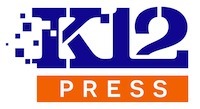Ensuring that your school’s website content is both relevant and engaging has never been more important. But how do you determine which content is most effective? The answer lies in data analytics for better school website content strategies.
Data analytics can be a powerful tool for schools looking to enhance their website content strategy. By analyzing user behavior, engagement metrics, and other key data points, schools can make informed decisions about what content resonates with their audience, what needs improvement, and how to better meet the needs of their community.
Understanding Data Analytics
At its core, data analytics involves collecting and analyzing data to identify patterns and trends. For school websites, this could mean tracking how visitors navigate through your site, which pages they spend the most time on, and which content they interact with the most. By understanding these patterns, schools can tailor their content to better meet the interests and needs of their audience.
There are several types of data that schools can collect to inform their content strategy:
- Visitor Statistics: Understanding who is visiting your site, how often, and from where can provide valuable insights into your audience.
- User Behavior: Tracking how users navigate through your site can reveal which pages are most popular and which might need improvement.
- Content Engagement: Analyzing which blog posts, videos, or other content pieces are getting the most views, shares, and comments can help you identify what topics resonate most with your audience.
- Search Queries: Knowing what users are searching for on your site can help you identify content gaps and opportunities.
Why Data Analytics for Better School Website Content
Targeting the right content to the right audience is crucial for any website, but it’s especially important for schools, where clear communication and engagement are key. Data analytics can provide the insights needed to optimize your content and ensure it’s reaching and resonating with your target audience.
- Targeting Content: By analyzing data on which pages or posts are most popular, schools can identify the topics that matter most to their community and create more of that type of content.
- Improving Engagement: Understanding user behavior on your site can help you optimize your content layout, design, and navigation to keep visitors engaged longer.
- Supporting Decision-Making: Data-driven insights allow school webmasters to make informed decisions about which content to create, update, or remove, ensuring that every piece of content serves a purpose.
Tools for Data Analytics
There are several tools available that can help schools gather and analyze data to inform their content strategy:
- Google Analytics: A must-have tool for any webmaster, Google Analytics provides detailed insights into website traffic, user behavior, and more.
- Heatmaps & Click Tracking: Tools like Hotjar allow you to see where users are clicking on your site and how they interact with different elements, providing valuable insights into user experience.
- Social Media Insights: Social media platforms offer their own analytics tools, which can complement your website data by showing how your content is performing on social media.
Case Study: A Data-Driven Approach to Content Strategy
Let’s consider a hypothetical example of a school district that used data analytics to refine its website content strategy. Initially, the district noticed that their blog posts weren’t getting much engagement. After analyzing their website data, they discovered that visitors were spending more time on pages related to student achievements and events.
Armed with this insight, the district decided to shift their content focus towards more stories and updates about student activities and successes. They also optimized their blog’s layout to make it easier for users to find and share these stories. The result? A significant increase in page views and social media shares, along with positive feedback from the community.
Steps to Implement a Data-Driven Content Strategy
If your school is ready to start using data analytics to drive its content strategy, here are some steps to get you started:
- Setting Objectives: Start by defining clear goals for your website content. What do you want to achieve? More engagement? Better communication with parents? These goals will guide your data collection and analysis efforts.
- Data Collection: Use tools like Google Analytics to gather data on website traffic, user behavior, and content performance. The more data you have, the better insights you’ll gain.
- Content Optimization: Based on your data analysis, make adjustments to your content. This could mean creating more of the content that’s performing well, updating or removing content that isn’t, and optimizing your site’s layout and navigation to improve user experience.
- Continuous Monitoring: Data-driven content strategy isn’t a one-time effort. Continuously monitor your website’s performance, analyze new data, and make adjustments as needed to keep your content strategy effective.
Conclusion: Data Analytics for Better School Website Content
Incorporating data analytics into your school’s website content strategy can seem daunting, but the benefits far outweigh the challenges. By understanding what your audience wants and how they interact with your site, you can create content that truly engages and serves your community.
At K12Press, we’re here to help schools navigate the complexities of data analytics and content strategy. If you’re ready to take your website to the next level, reach out to us for expert guidance and support. Contact K12Press














